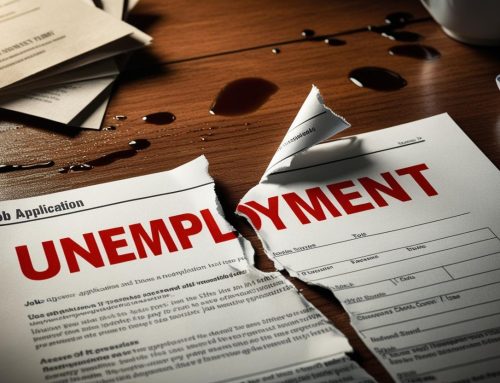March 1, 2023
Gross domestic product (GDP), 4th quarter of 2022
-0.4% on the previous quarter (price, seasonally and calendar adjusted)
+0.3% on the same quarter a year earlier (price adjusted)
+0.9% on the same quarter a year earlier (price and calendar adjusted)
The gross domestic product (GDP) fell by 0.4% in the fourth quarter of 2022 on the third quarter of 2022 after adjustment for price, seasonal and calendar variations. The Federal Statistical Office (Destatis) reports that the GDP was by 0.2 percentage points lower than communicated in the first release of 30 January 2023.The German economy markedly lost momentum at the end of the year. The gross domestic product grew in the first three quarters of last year (+0.8%, +0.1% and +0.5%) despite difficult framework conditions in the global economy. For the whole year of 2022, most recent calculations confirmed a year-on-year growth of 1.8% (calendar adjusted: +1.9%).
Household final consumption expenditure and capital formation slowed economic performance
The continuing large price increases and the ongoing energy crisis had a negative effect on the German economy towards the end of the year. This was reflected especially in household final consumption expenditure, which was down 1.0% in the fourth quarter of 2022 (price, seasonally and calendar adjusted). After reliefs such as the fuel discount and the 9-euro ticket ended, consumers spent less on consumption in the fourth quarter of 2022 than in the third quarter of 2022. Gross fixed capital formation, too, was down on the previous quarter. Gross fixed capital formation in construction decreased after elimination of price, seasonal and calendar effects (-2.9%), as was the case in the previous two quarters. Gross fixed capital formation in machinery and equipment fell markedly, too (-3.6%), at the end of the year. Government final consumption expenditure was slightly up on the previous quarter (+0.6%).
In the fourth quarter of 2022, exports of goods and services were down a total 1.0% on the third quarter of 2022, after price, seasonal and calendar adjustment. There was a slightly larger decrease in imports (-1.3%). This was due not only to the difficult international situation, including ongoing supply chain disruptions, but also to the high energy prices, which led to lower trade with chemical products, for example.
Gross value added down in most service branches
In the fourth quarter of 2022, the price, seasonally and calendar adjusted gross value added decreased by 1.4% on the previous quarter. Almost all economic sectors saw a decrease. Slight increases were recorded only in information and communication, real estate activities and business services. Against the background of the high inflation rates, gross value added was markedly lower than in the previous quarter in other services (-6.8%) and trade, transport, accommodation and food services (-2.9%). Gross value added in manufacturing was down a price, seasonally and calendar adjusted 0.6% in the fourth quarter of 2022 due to sharp falls in output in energy-intensive branches such as manufacture of chemicals and manufacture of basic metals. Economic performance in construction fell for the third consecutive quarter (-2.4%).
Gross domestic product increased year on year
GDP in the fourth quarter of 2022 was up a price adjusted 0.3% compared with the fourth quarter of 2021. After price and calendar adjustment, the increase was larger (0.9%) as there were fewer working days than a year earlier.
Capital formation markedly up year on year, household and government final consumption expenditure growing moderately
Domestic uses continued to grow year on year despite large price increases and global insecurity. This applies especially to gross fixed capital formation in machinery and equipment, which rose a price adjusted 3.1% from the fourth quarter of 2021. A major reason was the sharp increase in commercial new registrations of passenger cars at the end of the year. As regards gross fixed capital formation in construction, however, the continuing high construction prices and the increase in interest rates in construction led to a growing number of building project cancellations. The cold weather in December 2022 had a negative effect, too. Gross fixed capital formation in construction recorded a marked price adjusted 4.9% decrease year on year. Consequently, total gross fixed capital formation, too, was slightly down on the previous year (-1.2%).
Household final consumption expenditure grew moderately by a price adjusted 0.4%. The negative impact of the large price increases was overlapped by catch-up effects of the Covid crisis, which were reflected especially by higher expenditure on travels and food and beverage service activities at the end of the year. Government final consumption expenditure, too, rose moderately by a price adjusted 0.5%. General government spent markedly more to accommodate, feed and teach all the people from Ukraine and other countries seeking protection. At the same time, however, expenditure to fight the Covid pandemic went down.
Foreign trade increased slightly on a year earlier although especially trade in goods markedly lost momentum. Total exports of goods and services increased a price adjusted 0.5% in the fourth quarter of 2022 from the fourth quarter of 2021, with exports of goods falling slightly. Total imports grew a price adjusted 1.9% in the same period, the main reason being sharp increases in tourism expenditure of residents abroad and in imports of other services, whereas imports of goods rose just slightly.
Service branches improved their economic performance year on year, other economic sectors recorded decrease
Overall, the price adjusted gross value added in the fourth quarter of 2022 was up 0.4% on the fourth quarter of 2021.
It was only the service branches that contributed to the increase. Large year-on-year increases were recorded by other services (+5.9%), public services, education, health (+3.7%) and information and communication (+3.7%). The sector of trade, transport, accommodation and food services could not continue its catch-up process at the end of the year and recorded a 0.7% decline from the same quarter a year earlier. This was mainly due to the sharp price increases that had a negative effect especially on trade. Accommodation and food services grew markedly after they had suffered considerably from the Covid pandemic related restrictions in the previous year.
The downward trend in construction continued; price adjusted gross value added was down 6.2% year on year. Factors contributing to that development were not only material and skilled labour shortage but also the cold weather in December. Manufacturing, too, saw a 1.1% decrease. This was due mainly to production losses in industrial branches that suffered particularly from the sharp energy price rises.
Employment at record high again
The economic performance in the fourth quarter of 2022 was achieved by roughly 45.9 million persons in employment whose place of employment was in Germany. That was an increase of 1.1%, or 492,000, compared with a year earlier. Thus a new record high was reached.
The average number of hours worked per person in employment was down by 1.5% compared with the fourth quarter of 2021. Apart from calendar effects, this was due to a higher number of staff on sick leave. The labour volume of the overall economy, which is the total number of hours worked by all persons in employment, declined by 0.5%. This is shown by provisional calculations of the Institute for Employment Research (IAB) of the Federal Employment Agency.
Overall labour productivity (price adjusted GDP per hour worked by persons in employment) rose by 0.8% on the same quarter of the previous year. Labour productivity per person in employment was 0.7% lower year on year.
Nominal income and consumption up markedly, savings ratio down year on year
At current prices, the GDP rose by 6.5% and the gross national income by 6.3% in the fourth quarter of 2022 compared with a year earlier. Net national income at factor costs increased by 3.5% on the fourth quarter of 2021. The compensation of employees was up 6.3%, whereas property and entrepreneurial income was down 3.9%, according to provisional calculations. Average gross wages and salaries recorded a 5.6% increase in the fourth quarter of 2022 from the same period a year earlier. This growth is mainly due to the fall in short-time work, in addition to the collectively agreed wage increases. Total gross wages and salaries rose 6.8% on a year earlier as the number of employees also went up once more. The increase of net wages and salaries (+7.5%) was slightly larger than that of gross wages and salaries, one of the reasons being the downward effect of the Tax Relief Act 2022. Overall, the extremely high inflation led to noticeable losses in real earnings for employees, on average, also at the end of 2022.
The savings ratio (10.8%) was below the previous year’s value (11.5%) in the fourth quarter of 2022. The sharp increases in energy and food prices, in particular, contributed to the 9.3% rise in household final consumption expenditure at current prices year on year. The disposable income rose slightly less (+8.7%) on the previous year. The increase would have been lower had it not been for the energy lump-sum payment of the government.
Germany’s economy compared internationally
The economies of the other large Member States of the European Union (EU) and of the EU as a whole also slowed in the fourth quarter of 2022. Spain and France still recorded slight increases of 0.2% and 0.1%, respectively, from the third quarter of 2022, while the price, seasonally and calendar adjusted GDP of Italy dropped by 0.1%. GDP stagnated in the EU as a whole compared with the third quarter of 2022, according to provisional calculations of the Statistical Office of the European Union (Eurostat). Economic performance in the United States (USA) was up 0.7% on the previous quarter, more than in most European countries. In terms of price, seasonally and calendar adjusted GDP growth rates, Germany is middle-ranking internationally in a year-on-year comparison.
Source: DESTATIS
Legal Notice: The information in this article is intended for information purposes only. It is not intended for professional information purposes specific to a person or an institution. Every institution has different requirements because of its own circumstances even though they bear a resemblance to each other. Consequently, it is your interest to consult on an expert before taking a decision based on information stated in this article and putting into practice. Neither Karen Audit nor related person or institutions are not responsible for any damages or losses that might occur in consequence of the use of the information in this article by private or formal, real or legal person and institutions.






